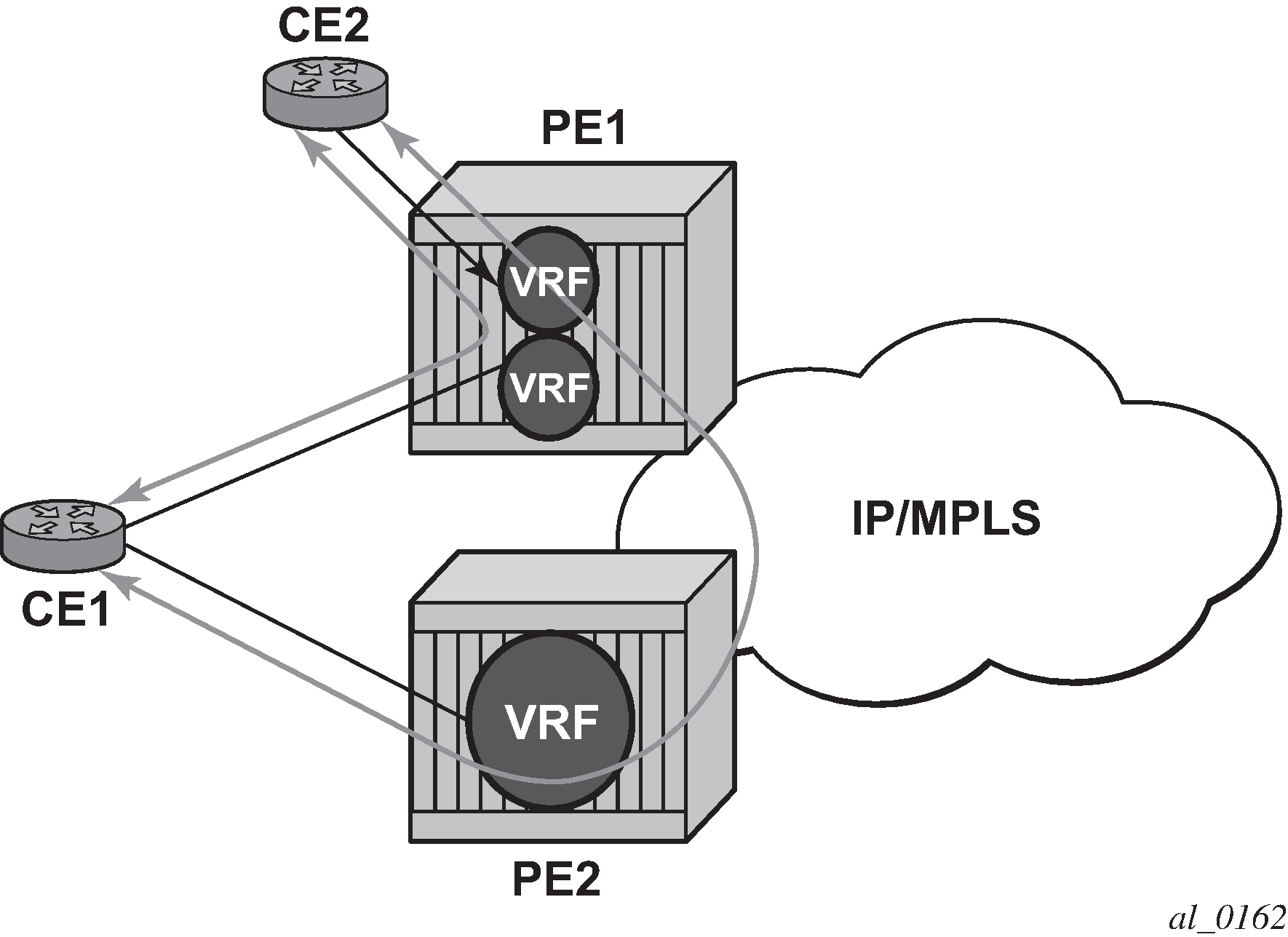eiBGP load balancing allows a route to have multiple next hops of different types, using both IPv4 next hops and MPLS LSPs simultaneously.
Figure: Basic eiBGP topology displays a basic topology that could use eiBGP load balancing. In this topology CE1 is dual homed and therefore reachable by two separate PE routers. CE 2 (a site in the same VPRN) is also attached to PE1. With eiBGP load balancing, PE1 uses its own local IPv4 nexthop as well as the route advertised by MP-BGP, by PE2.

Another example displayed in Figure: Extranet load balancing shows an extra net VPRN (VRF). The traffic ingressing the PE that should be load balanced is part of a second VPRN and the route over which the load balancing is to occur is part of a separate VPRN instance and are leaked into the second VPRN by route policies.
Here, both routes can have a source protocol of VPN-IPv4 but one still has an IPv4 nexthop and the other can have a VPN-IPv4 nexthop pointing out a network interface. Traffic is still load balanced (if eiBGP is enabled) as if only a single VRF was involved.

Traffic is load balanced across both the IPv4 and VPN-IPv4 next hops. This helps to use all available bandwidth to reach a dual-homed VPRN.